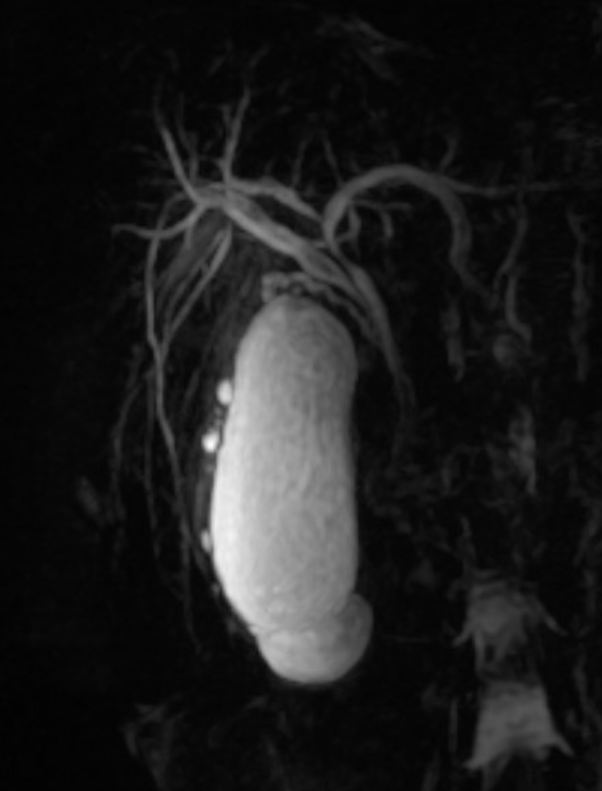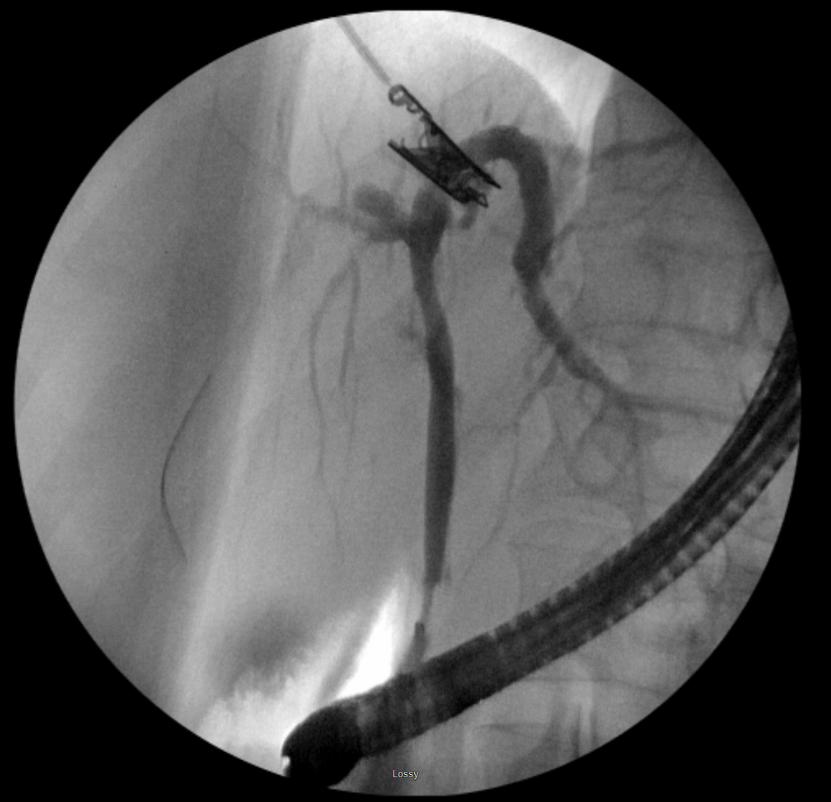Tuesday Poster Session
Category: Biliary/Pancreas
P4414 - Cholestasis Without a Label: A Case of Idiopathic Cholestatic Liver Disease
Tuesday, October 28, 2025
10:30 AM - 4:00 PM PDT
Location: Exhibit Hall

Lily O'Brien, MD (she/her/hers)
St. Elizabeth Youngstown Hospital
Youngstown, OH
Presenting Author(s)
Lily O'Brien, MD1, Carl Manzo, MD2
1St. Elizabeth Youngstown Hospital, Youngstown, OH; 2Mercy Health, Youngstown, OH
Introduction: Cholestatic liver disease is characterized by impaired bile formation or flow, typically marked by a disproportionate elevation in alkaline phosphatase (ALP), and gamma-glutamyl transferase (GGT) compared to aminotransferases (ALT, AST). Common causes include primary biliary cholangitis, drug-induced cholestasis, and biliary obstruction. We present a case of a 44-year-old male patient presenting with chronic cholestatic hepatopathy and significant jaundice, in the absence of serologic or histologic abnormalities, representing a case of idiopathic cholestatic disease.
Case Description/
Methods: A 44-year-old male patient presented with abdominal pain and elevated liver function tests (LFTs): alkaline phosphatase 1,858, ALT 213, AST 260, and total bilirubin 6.7. Serologic and metabolic workup including ASMA, AMA, IgG4, Anti-SP100, Anti-GP210, CA 19-9, and viral hepatitis panels were unremarkable. CT abdomen and right upper quadrant ultrasound showed only reactive gallbladder wall edema. MRI/MRCP revealed mild intrahepatic biliary dilation with pruning appearance of the ducts including areas of wall thickening, suggestive of possible early primary sclerosing cholangitis (PSC). However, ERCP with stent placement showed no dominant stricture or typical cholangiopathic changes and failed to improve LFTs. Liver biopsy was consistent with non-specific chronic cholestatic liver disease. Given persistently abnormal LFTs, prednisone was started without improvement in LFTs despite treatment. The patient remained jaundiced but without signs of hepatic decompensation. In the setting of elevated MELD and persistent cholestatic liver injury, the patient was referred for liver transplant evaluation.
Discussion: This case, patient presented with a chronic cholestatic pattern of liver injury, yet extensive evaluation failed to reveal a definitive etiology. In idiopathic cases, management is supportive and symptom driven, as specific therapies are limited in the absence of defined underlying disease. Emerging agents targeting bile acid metabolism are under study, but long-term efficacy and safety remain to be established. Until then, the mainstay of care in cases like this remains vigilant management of cholestasis-related complications and timely referral for liver transplant consideration are essential to optimizing patient outcomes.

Figure: Figure 1. MRI/MRCP with changes likely consistent with PSC with intrahepatic biliary dilation. No portal vein thrombosis

Figure: Figure 2. ERCP. Stent placed. No evidence of dominant stricture or typical appearance of cholangiopathy.
Disclosures:
Lily O'Brien indicated no relevant financial relationships.
Carl Manzo indicated no relevant financial relationships.
Lily O'Brien, MD1, Carl Manzo, MD2. P4414 - Cholestasis Without a Label: A Case of Idiopathic Cholestatic Liver Disease, ACG 2025 Annual Scientific Meeting Abstracts. Phoenix, AZ: American College of Gastroenterology.
1St. Elizabeth Youngstown Hospital, Youngstown, OH; 2Mercy Health, Youngstown, OH
Introduction: Cholestatic liver disease is characterized by impaired bile formation or flow, typically marked by a disproportionate elevation in alkaline phosphatase (ALP), and gamma-glutamyl transferase (GGT) compared to aminotransferases (ALT, AST). Common causes include primary biliary cholangitis, drug-induced cholestasis, and biliary obstruction. We present a case of a 44-year-old male patient presenting with chronic cholestatic hepatopathy and significant jaundice, in the absence of serologic or histologic abnormalities, representing a case of idiopathic cholestatic disease.
Case Description/
Methods: A 44-year-old male patient presented with abdominal pain and elevated liver function tests (LFTs): alkaline phosphatase 1,858, ALT 213, AST 260, and total bilirubin 6.7. Serologic and metabolic workup including ASMA, AMA, IgG4, Anti-SP100, Anti-GP210, CA 19-9, and viral hepatitis panels were unremarkable. CT abdomen and right upper quadrant ultrasound showed only reactive gallbladder wall edema. MRI/MRCP revealed mild intrahepatic biliary dilation with pruning appearance of the ducts including areas of wall thickening, suggestive of possible early primary sclerosing cholangitis (PSC). However, ERCP with stent placement showed no dominant stricture or typical cholangiopathic changes and failed to improve LFTs. Liver biopsy was consistent with non-specific chronic cholestatic liver disease. Given persistently abnormal LFTs, prednisone was started without improvement in LFTs despite treatment. The patient remained jaundiced but without signs of hepatic decompensation. In the setting of elevated MELD and persistent cholestatic liver injury, the patient was referred for liver transplant evaluation.
Discussion: This case, patient presented with a chronic cholestatic pattern of liver injury, yet extensive evaluation failed to reveal a definitive etiology. In idiopathic cases, management is supportive and symptom driven, as specific therapies are limited in the absence of defined underlying disease. Emerging agents targeting bile acid metabolism are under study, but long-term efficacy and safety remain to be established. Until then, the mainstay of care in cases like this remains vigilant management of cholestasis-related complications and timely referral for liver transplant consideration are essential to optimizing patient outcomes.

Figure: Figure 1. MRI/MRCP with changes likely consistent with PSC with intrahepatic biliary dilation. No portal vein thrombosis

Figure: Figure 2. ERCP. Stent placed. No evidence of dominant stricture or typical appearance of cholangiopathy.
Disclosures:
Lily O'Brien indicated no relevant financial relationships.
Carl Manzo indicated no relevant financial relationships.
Lily O'Brien, MD1, Carl Manzo, MD2. P4414 - Cholestasis Without a Label: A Case of Idiopathic Cholestatic Liver Disease, ACG 2025 Annual Scientific Meeting Abstracts. Phoenix, AZ: American College of Gastroenterology.
